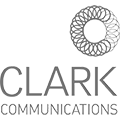Choose Your Newswire
The news release has been edited, proofread and approved…now it’s time to issue the release “over the wire.” What wire service should you use? How much will it cost? Who receives the release? Understanding what you need and what your options are will enable you to make the best choice.
Options
The leaders of the newswire market are PR Newswire and Business Wire. There have been several start-ups that have tried to enter the market in the past few years, including Market Wire, but for most PR practitioners, PR Newswire (established in 1954) and Business Wire (around since 1961) are the best options. Like comparable brands, the differences are minimal – both provide effective news release distribution and their prices are similar – the decision often comes down to personal preference.
How They Work
The wire services use several methods to ensure instantaneous (and simultaneous) delivery of your news release. Satellite, e-mail, fax and proprietary networks deliver your release to targeted media audiences literally at the press of a button. Using the same delivery network, most wires can also distribute photos, video, audio and other multimedia files.
Issuing a news release is as easy as e-mailing the document to the wire service, selecting a distribution option and requesting a distribution time. Plan on allowing one hour for the service to format the document before it’s issued. If you have a release approved ahead of time, you can send the release the previous evening, and specify a distribution time for the next morning.
While it’s easy to get a release distributed, it’s also easy to issue a release with a mistake or typo. The wire services do proofread news releases, but the safest bet is to have the right editing/proofreading mechanisms in place before the release is sent to the wire service. Don’t count on the service to catch mistakes.
Each service provides various distribution options targeting specific geographies (Northeast, Latin America, Asia, etc.) as well as industry segments (technology, energy, etc.). For example: If you’re a Massachusetts technology company making a personnel announcement, issuing the release on the technology “corridor” option via Business Wire will save you about $250 – and still get the release to the right people. Adding a New England distribution to the same release will add another $100 to your overall cost. So while you won’t reach the managing editor at the Sacramento Bee…she probably wouldn’t have covered your new VP of Marketing announcement anyway.
If you’ve got your heart set on distributing your announcement throughout the world, $6,000 (approximate) will get you full global distribution for a 400-word release.
Content for Newswire Stories
Who receives newswire stories? The media community remains the primary audience for newswire services, but distribution has expanded in the past few years to reach Internet portals, investors, financial and research databases, news and information sites and content syndicates. Even individuals can sign up to receive news releases.
What should go over the wire? When you’re determining whether or not a news release should be issued over the wire, keep in mind the following three questions:
- What is the “real” news value of my release? If it’s low, then spend less money and issue the release to a more restricted distribution list or just post it on your Web site or do an e-mail blast and save the money.
- Who are my intended audiences? If the release only relates to a certain geography, topic or type of media, only buy what you need.
- What are the most cost-effective ways to reach my target audience? Discuss your options with your newswire representative.
Measurement
After your news release crosses the wire, how do you track where it’s been picked up? The wire services all offer quantitative measurement services – some for a fee, some free of charge. Typical measurement services include providing a list of sites that have republished the news release and reports to monitor who has accessed your release.
